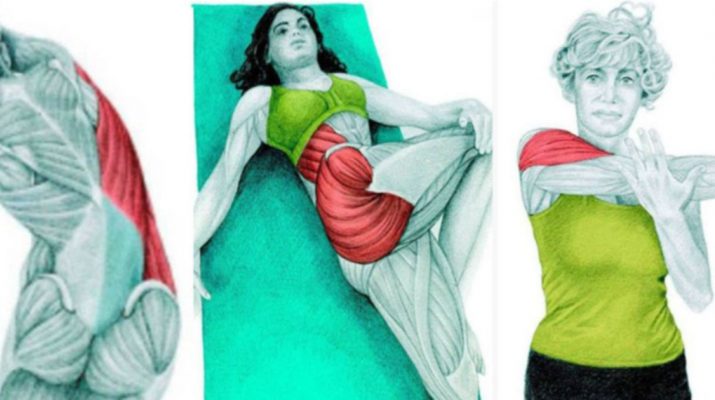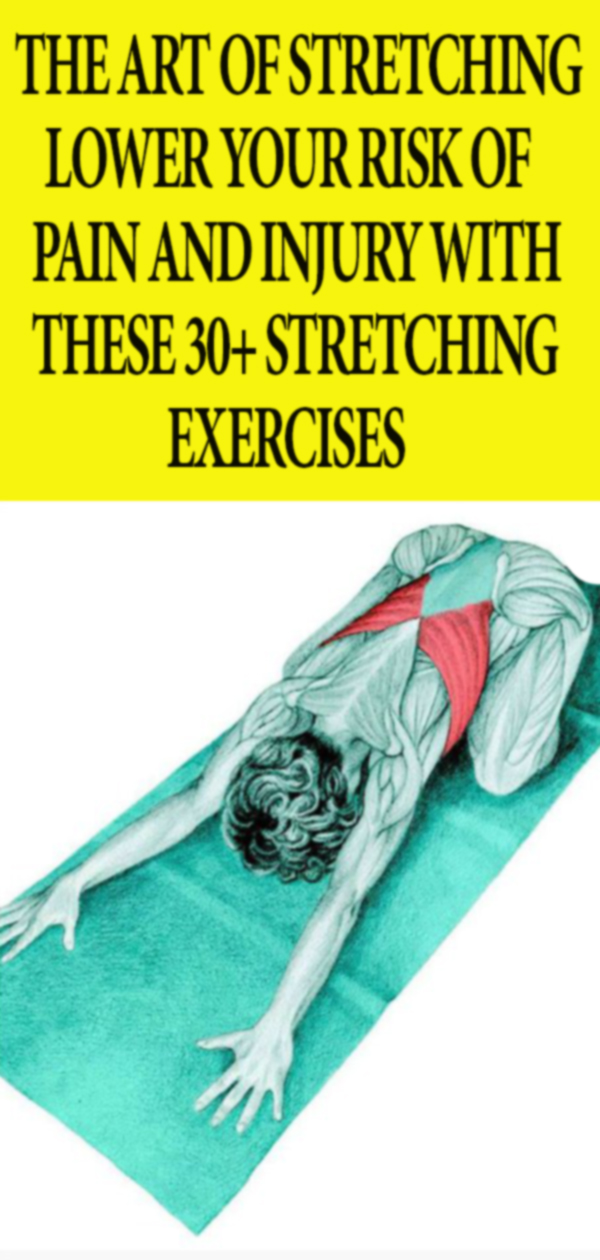Experts agree that stretching is a simple but extremely beneficial activity if done in the right way. It is the deliberate lengthening of muscles with the aim to increase muscle flexibility and joint range of motion.
These activities are vital in any exercise or rehabilitation program, as they warm up the body before the physical workout and lower the risk of muscle soreness and injury. They help warm the body up prior to activity thus decreasing the risk of injury as well as muscle soreness.
The Mayo Clinic reveals the top five benefits of stretching:
“Increased flexibility and joint range of motion: Flexible muscles can improve your daily performance. Tasks such as lifting packages, bending to tie your shoes or hurrying to catch a bus become easier and less tiring. Flexibility tends to diminish as you get older, but you can regain and maintain it.
Improved circulation: Stretching increases blood flow to your muscles. Blood flowing to your muscles brings nourishment and gets rid of waste byproducts in the muscle tissue. Improved circulation can help shorten your recovery time if you’ve had any muscle injuries.
Better posture: Frequent stretching can help keep your muscles from getting tight, allowing you to maintain proper posture. Good posture can minimize discomfort and keep aches and pains at a minimum.
Stress relief: Stretching relaxes tight, tense muscles that often accompany stress.
Enhanced coordination: Maintaining the full range-of-motion through your joints keeps you in better balance. Coordination and balance will help keep you mobile and less prone to injury from falls, especially as you get older.”
Here is a list of stretches that you can do throughout the entire day, and reap the benefits of stretching:
Head
Lateral side flexion of the neck (fig.7)
Target: Sternocleidomastoid “SCM”
You can intensify the stretch by sitting on a chair and clutching the bottom of the seat
Neck rotation stretch (fig.8)
Target: SCM
For a deeper stretch, press with the opposite hand
Neck extension stretch (fig.9)
Target: SCM
Note that you should be careful not to collapse your cervical spine
Lateral side flexion of the neck with hand assistance (fig.10)
Target: SCM
For a deeper stretch, sit on a chair and grab its bottom
Upper Body
Forearm extensor stretch
Target: Forearm extensor
To extend the stretch, touch the tips of your fingers in a teacup shape
Lateral shoulder stretch (fig.13)
Target: Side deltoid
Standing assisted neck flexion stretch (fig.14)
Target: Trapezius muscle
Lat stretch with spinal traction (fig.15)
Target: Latissimus dorsi
If you suffer from a shoulder pain, avoid this stretch
Lat stretch at the wall (fig.16)
Target: Latissimus dorsi
If you suffer from lower back pain, avoid this stretch
Child’s pose (fig.17)
Target: Latissimus dorsi
Lateral flexion with a dowel (fig.27)
Target: External obliques and latissimus dorsi
If you suffer from lower back pain, avoid this stretch
Triangle pose (fig.28)
Target: External obliques
While rotating away, stare in the hand in the air
Chest stretch at the wall (fig.29)
Target: Pectorals
Note that you should not feel shoulder stretch while doing it
Assisted chest stretch (fig.30)
Target: Chest and latissimus dorsi
Do not do this stretch if you have shoulder issues
Supine shoulder external rotation stretch (fig.32)
Target: Subscapularis
In case the hand is far from the floor, your rotator cuff is tight
Down dog variation at the wall (fig.33)
Target: Pectorals and latissimus dorsi
Bend the knees in case your hamstrings are tight
Assisted chest stretch variation (fig.34)
Target: Pectorals
Do not do this stretch if you have shoulder issues
Standing upper trapezius stretch (fig.35)
Target: Upper trapezius muscle
Hold for 30 seconds and repeat on the other side
Standing upper back extension (fig.36)
Target: Teres major, rhomboids, and upper traps
Hold the stretch for 10-15 seconds
Lower Body
Camel pose (fig.1)
Target: Rectus abdominous and external obliques
If you have neck problems, do not drop the head back
Wide forward fold (fig.2)
Target: Abductors
You can also lie down on the floor and elevate the feet up the wall
Frog pose (fig.3)
Target: Abductors
For a deeper stretch, push the hips back and forward
Wide side lunge pose (Fig.4)
Target: Abductors
Your feet should be flat on the floor
Butterfly stretch (fig.5)
Target: Abductors
Bring the feet farther from the hips and slowly round the upper body to stretch the back muscles
Half kneeling quad/hip flexor stretch (fig.11)
Target: Psoas and quadriceps
To deepen the hip flexor stretch, squeeze the back foot to the back glute
Standing calf stretch (fig.18)
Target: Soleus and gastrocnemius (low body)
While stretching, lightly rotate the ankles
Front split (fig.19)
Target: Psoas and hamstring
Use a chair as a support while releasing the hip flexors and hamstrings
Seated forward fold/seated toe touch (fig.20)
Target: Hamstrings and calves
You can lie down on the back and place the feet up the wall
Single leg forward bend (fig.21)
Target: Hamstrings
Deep squat (fig.22)
Target: Glutes
You can lie down on the back and place the feet up the wall
Seated half king pigeon pose (fig.23)
Target: Glutes
You should feel the stretch in the glutes only
Standing calf stretch at the wall (Fig.24)
Target: Soleus and gastrocnemius (low)
Lateral flexion at the wall (fig.25)
Target: External obliques
In case you suffer from lower back pain, avoid this stretch
Supine twist (fig.26)
Target: Glutes and external obliques
When the knees are lower, you will stretch the lumbar spine, and when the knees are higher, the stretch is deeper in the upper spine
Seated half pigeon variation (Fig.31)
Target: Anterior tibialis
To deepen the stretch on the hip, lean forward






















